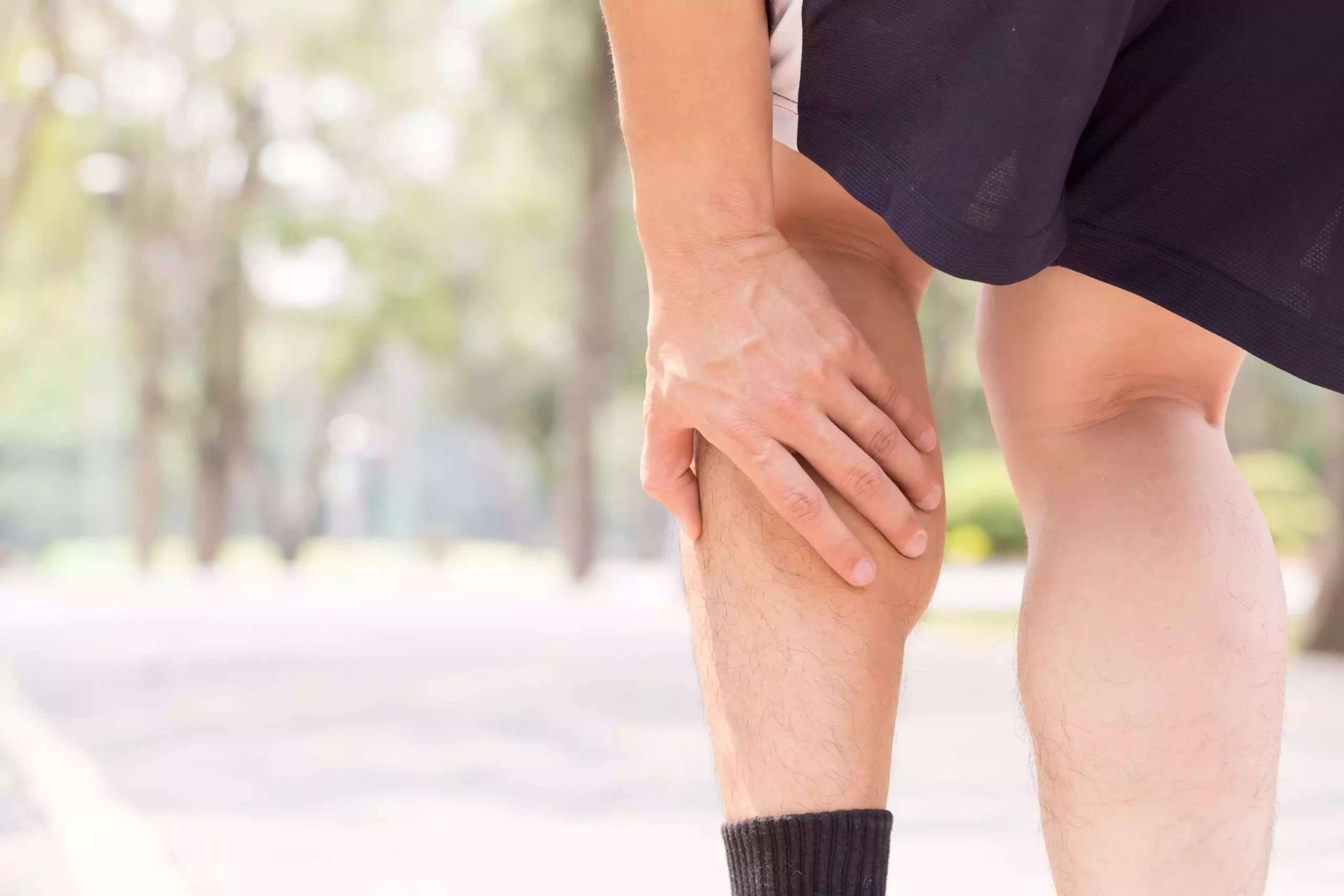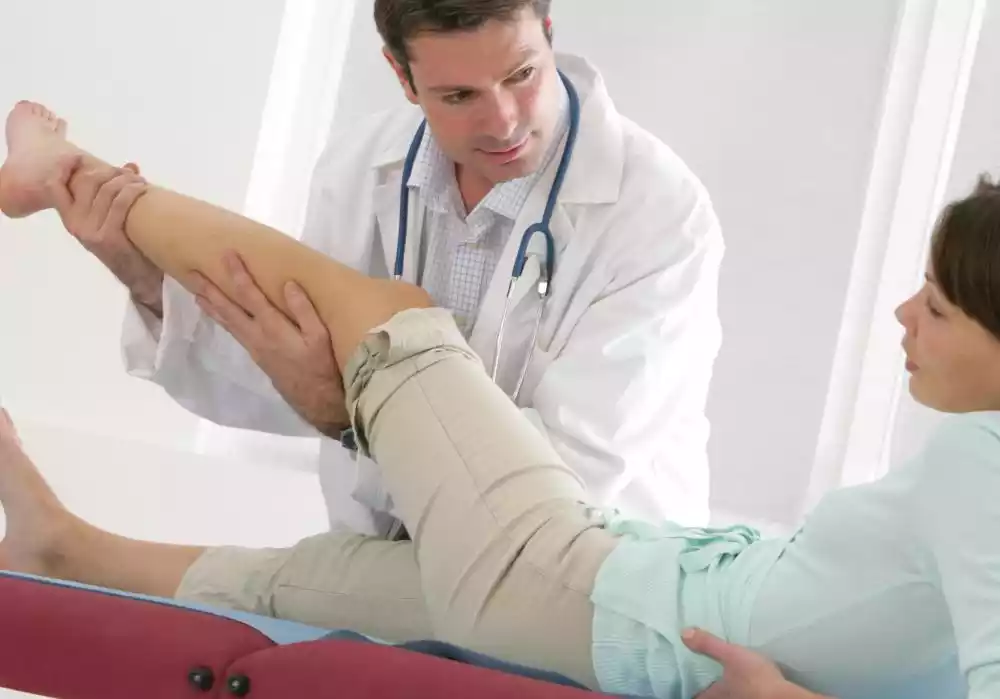Charley Horse and Pulled Muscle are two common but distinct muscle-related conditions often confused due to their association with muscular pain. A Charley Horse, also known as a muscle cramp, is a sudden, painful muscle contraction, while a pulled muscle results from overstretching or tearing of muscle fibers. These conditions differ in their causes, symptoms, and treatment approaches. Understanding these differences is crucial for effective diagnosis and appropriate management, ultimately ensuring the well-being and quality of life of individuals who may experience these muscle injuries.
Definition of Charley Horse
Charley Horse:
A Charley Horse, often referred to as a muscle cramp, is a sudden, involuntary, and intensely painful muscle contraction or spasm that typically occurs in the calf muscles. This condition can also affect other muscle groups, such as the quadriceps, hamstrings, and even the hands or feet. Charley Horses can last anywhere from a few seconds to several minutes and can be quite debilitating.

Causes of Charley Horse
Charley Horse:
- Dehydration: One of the leading causes of Charley Horses is dehydration, which can lead to an electrolyte imbalance in the body.
- Overexertion: Excessive physical activity or prolonged muscle use can lead to muscle cramps.
- Mineral Deficiency: Low levels of minerals like potassium, calcium, and magnesium can increase the risk of Charley Horses.
- Nerve Compression: Conditions like spinal stenosis or nerve compression can contribute to muscle spasms.
Symptoms of Charley Horse
Charley Horse:
- Sudden, intense pain: The hallmark of a Charley Horse is a sharp, cramping pain that comes on suddenly.
- Visible muscle contraction: The affected muscle may visibly contract or bulge during the cramp.
- Stiffness: After the cramp subsides, the muscle may remain stiff and sore for a period.
- No swelling or bruising: Charley Horses do not typically cause swelling or bruising.
Definition of Pulled Muscle
Pulled Muscle:
A pulled muscle, on the other hand, is a strain or tear of a muscle or tendon due to overstretching or excessive force applied to the muscle. This injury is characterized by a tearing sensation, immediate pain, and sometimes swelling or bruising in the affected area. Pulled muscles can occur in various muscle groups, including the back, neck, shoulders, and legs.

Causes of Pulled Muscle
Pulled Muscle:
- Overexertion: Pulled muscles are often the result of overstretching or straining a muscle during activities like lifting, running, or even a sudden, forceful movement.
- Inadequate Warm-up: Failing to warm up properly before exercise can increase the risk of pulled muscles.
- Age and Fatigue: Muscles become more susceptible to strains with age, and fatigue can weaken them, making injuries more likely.
- Lack of Flexibility: Poor flexibility can strain muscles during everyday movements or activities.
Symptoms of Pulled Muscle
Pulled Muscle:
- Immediate pain: A pulled muscle is associated with immediate, sharp pain in the affected area.
- Swelling and bruising: In some cases, a pulled muscle can lead to swelling and bruising due to the tissue damage.
- Limited mobility: The injured muscle may result in reduced range of motion and weakness.
- Muscle spasms: Muscle spasms can occur in response to the injury, and these can be painful.
Importance of Distinguishing Between Charley Horse and Pulled Muscle
Differentiating between Charley Horse and pulled muscle is crucial for several reasons:
- Effective Treatment: Accurate diagnosis ensures that the right treatment approach is chosen. Charley Horses and pulled muscles have different management strategies, so knowing the correct condition is essential for prompt relief.
- Prevention: Understanding the causes and risk factors associated with each condition helps individuals take preventive measures to avoid future occurrences.
- Recovery Time: The recovery time for a Charley Horse is typically shorter than that for a pulled muscle. Knowing the exact injury can help individuals plan their activities and recovery.
- Avoiding Complications: A pulled muscle can lead to complications if not treated properly. These complications may include chronic pain or recurring injuries.
- Quality of Life: Accurate diagnosis and appropriate treatment lead to a better quality of life by reducing pain and discomfort.
Differences Between Charley Horse and Pulled Muscle
To distinguish between Charley Horse and pulled muscle effectively, let’s explore the key differences:
- Nature of Injury:
- Charley Horse: Charley Horses are sudden muscle cramps or spasms caused by muscle contractions.
- Pulled Muscle: Pulled muscles result from overstretching or tearing of muscle fibers.
- Onset of Pain:
- Charley Horse: Pain in a Charley Horse occurs suddenly and is characterized by intense cramping.
- Pulled Muscle: Pain in a pulled muscle is immediate and often accompanied by a tearing sensation.
- Location:
- Charley Horse: Typically occurs in the calf muscles but can affect other muscle groups.
- Pulled Muscle: Can occur in various muscle groups, such as the back, neck, shoulders, or legs.
- Duration:
- Charley Horse: Usually lasts for a few seconds to several minutes.
- Pulled Muscle: The pain associated with a pulled muscle can persist for days or even weeks.
- Visible Symptoms:
- Charley Horse: May exhibit visible muscle contractions during the cramp.
- Pulled Muscle: May result in swelling, bruising, or limited mobility in the affected area.
- Causes:
- Charley Horse: Often caused by factors like dehydration, overexertion, and mineral deficiencies.
- Pulled Muscle: Primarily caused by overstretching, inadequate warm-up, age-related factors, and a lack of flexibility.
- Treatment:
- Charley Horse: Usually involves stretching, massaging, and addressing underlying causes like dehydration or mineral deficiencies.
- Pulled Muscle: Treatment may include rest, ice, compression, and elevation (RICE), physical therapy, and sometimes surgical repair in severe cases.
- Recovery Time:
- Charley Horse: Typically has a shorter recovery time, often resolving within minutes or hours.
- Pulled Muscle: May take days to weeks to heal, depending on the severity of the strain.
- Risk of Complications:
- Charley Horse: Rarely leads to complications.
- Pulled Muscle: Can lead to complications like chronic pain or recurrent injuries if not managed properly.
Comparison Table
To provide a clear visual distinction between Charley Horse and pulled muscle, here’s a concise comparison table:
| Aspect | Charley Horse | Pulled Muscle |
|---|---|---|
| Nature of Injury | Muscle cramp or spasm | Overstretching or tear |
| Onset of Pain | Sudden, intense cramping | Immediate, tearing pain |
| Location | Typically in calf muscles | Various muscle groups |
| Duration | Seconds to minutes | Days to weeks |
| Visible Symptoms | Visible muscle contractions | Swelling, bruising, limited mobility |
| Causes | Dehydration, overexertion, mineral deficiencies | Overstretching, inadequate warm-up, age-related factors |
| Treatment | Stretching, massaging, addressing underlying causes | RICE, physical therapy, surgical repair (in severe cases) |
| Recovery Time | Minutes to hours | Days to weeks |
| Risk of Complications | Rare | Possible (chronic pain, recurrent injuries) |
Similarities of Charley Horse and Pulled Muscle
While Charley Horse and pulled muscle are distinct conditions, they do share some similarities:
- Pain: Both conditions cause significant pain, though the nature and duration of the pain differ.
- Muscle Involvement: Both Charley Horse and pulled muscle involve muscle tissue, but the nature of the involvement varies.
- Muscle Fatigue: Overexertion or muscle fatigue can contribute to the development of both conditions.
- Preventive Measures: Adequate hydration, warm-up, and muscle care are essential for preventing both Charley Horse and pulled muscles.
- Recovery Time: The recovery time for both conditions can be improved through proper care and treatment.
Diagnosis of Charley Horse and Pulled Muscle
Diagnosing Charley Horse and pulled muscle primarily relies on a physical examination and a detailed medical history.

The diagnostic process may involve the following:
Charley Horse:
- Clinical Assessment: A healthcare professional will assess the location and severity of the muscle cramp, typically focusing on the calf or other affected areas.
- Discussion of Symptoms: The patient’s description of the sudden, intense pain and any associated muscle contractions will help in the diagnosis.
- Identifying Underlying Causes: If the cramps are recurrent, further tests may be conducted to identify underlying causes such as electrolyte imbalances or nerve compression.
Pulled Muscle:
- Physical Examination: The healthcare provider will examine the injured area, looking for signs of swelling, bruising, or limited mobility.
- Patient History: A detailed history of the injury, including how it occurred and the nature of the pain, is crucial for diagnosis.
- Imaging Studies: In some cases, imaging tests like X-rays or MRI scans may be recommended to assess the extent of the muscle or tendon damage.
Treatment Approaches for Charley Horse and Pulled Muscle
Charley Horse:
- Stretching: Gentle stretching of the affected muscle can relieve the cramp.
- Massage: Massaging the cramped muscle can help relax it.
- Hydration: Ensuring proper hydration and addressing mineral deficiencies is essential for preventing future cramps.
- Medications: In severe cases, muscle relaxants or anti-spasmodic medications may be prescribed.
Pulled Muscle:
- RICE Protocol: Rest, Ice, Compression, and Elevation are standard initial treatments for pulled muscles.
- Pain Management: Over-the-counter pain relievers may be recommended for pain management.
- Physical Therapy: Physical therapy can aid in the recovery process, helping to restore strength and flexibility.
- Surgical Intervention: In cases of severe muscle or tendon tears, surgical repair may be necessary.
The Impact on Global Health
The impact of Charley Horse and pulled muscles on global health may not be as immediately apparent as some other medical conditions, but they can still have significant consequences.
- Workplace Productivity: These injuries can affect workplace productivity due to absenteeism and reduced efficiency among workers. In jobs that require physical labor, these injuries may lead to work-related disabilities.
- Quality of Life: Individuals who suffer from recurrent Charley Horses or pulled muscles often experience a reduced quality of life due to the pain and discomfort associated with these conditions.
- Healthcare Costs: Healthcare costs associated with the treatment and management of these injuries can be substantial, especially if complications arise.
- Sports and Physical Activity: Athletes and physically active individuals are particularly susceptible to pulled muscles, affecting their ability to perform and compete.
- Elderly Population: As people age, the risk of muscle-related injuries, including Charley Horses and pulled muscles, increases, potentially impacting the healthcare system and long-term care facilities.
Prevention Measures
Preventing Charley Horse and pulled muscle injuries involves adopting specific measures:
- Hydration: Ensure proper hydration by drinking an adequate amount of water daily and maintaining electrolyte balance.
- Stretching and Warm-up: Incorporate stretching and warm-up routines into your exercise regimen to improve muscle flexibility and reduce the risk of injuries.
- Balanced Diet: Consume a diet rich in minerals such as potassium, calcium, and magnesium to prevent muscle cramps.
- Proper Technique: Whether it’s in sports or daily activities, use proper body mechanics and techniques to avoid overexertion and strain.
- Strength and Flexibility Training: Incorporate strength and flexibility training into your fitness routine to build stronger muscles and reduce the risk of injury.
- Safety Gear: When participating in sports or high-risk activities, use appropriate safety gear and protective equipment.
Conclusion
While Charley Horse and pulled muscle are both musculoskeletal injuries, they have distinct characteristics that necessitate different approaches to treatment and prevention. Proper hydration, adequate warm-up, and addressing underlying deficiencies are essential for managing and preventing Charley Horses, whereas implementing the RICE protocol and appropriate rehabilitation are crucial for pulled muscles. A comprehensive understanding of these conditions can significantly improve patient outcomes and overall quality of life.